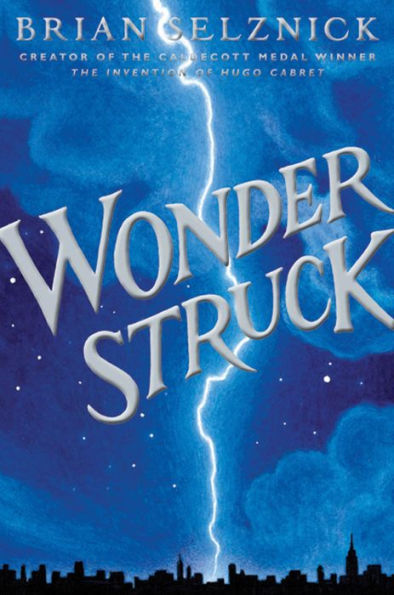Awards and Praise for Wonderstruck:#1 New York Times BestsellerNew York Times Notable Children's BookALA Notable Children's BookParents' Choice Gold WinnerPublishers Weekly Best Book“Engrossing, intelligent, beautifully engineered and expertly told in word and image.” — The New York Times“Moving and ingenious . . .” — The Wall Street Journal“Brian Selznick proves to be that rare creator capable of following one masterpiece—The Invention of Hugo Cabret—with another even more brilliantly executed.” — Washington Post“Another entrancing, exquisitely illustrated novel . . . Older kids and adults alike will be mesmerized by the interlocking stories. A verbal and visual marvel.” — Family Circle* “A gift for the eye, mind, and heart.” — Booklist, starred review* “Visually stunning, completely compelling.”— Kirkus Reviews, starred review* “Innovative . . . has the makings of a classic.” — Publishers Weekly, starred review* “A thing of wonder to behold . . . an emotional experience that neither the words nor the illustrations could achieve on their own.” — School Library Journal, starred review
Brian Selznick didn't have to do it.
He didn't have to return to the groundbreaking pictures-and-text format that stunned the children's-book world in 2007 and won him an unlikely—though entirely deserved—Caldecott medal for The Invention of Hugo Cabret. Weighing in at about two pounds, the 500-plus page tome combined textual and visual storytelling in a way no one had quite seen before.
In a world where the new becomes old in the blink of an eye, Selznick could have honorably rested on his laurels and returned to the standard 32-to-48–page picture-book format he has already mastered. He didn't have to try to top himself.
But he has.
If Hugo Cabret was a risky experiment that succeeded beyond Selznick and publisher Scholastic's wildest dreams (well, maybe not Scholastic's—they dream big), his follow-up, Wonderstruck, is a far riskier enterprise. In replicating the storytelling format of Hugo, Selznick begs comparisons that could easily find Wonderstruck wanting or just seem stale.
Like its predecessor, this self-described "novel in words and pictures" opens with a cinematic, multi-page, wordless black-and-white sequence: Two wolves lope through a wooded landscape, the illustrator's "camera" zooming in to the eye of one till readers are lost in its pupil. The scene changes abruptly, to Gunflint Lake, Minn., in 1977. Prose describes how Ben Wilson, age 12, wakes from a nightmare about wolves. He's three months an orphan, living with his aunt and cousins after his mother's death in an automobile accident; he never knew his father. Then the scene cuts again, to Hoboken in 1927. A sequence of Selznick's now-trademark densely crosshatched black-and-white drawings introduces readers to a girl, clearly lonely, who lives in an attic room that looks out at New York City and that is filled with movie-star memorabilia and models—scads of them—of the skyscrapers of New York.
Readers know that the two stories will converge, but Selznick keeps them guessing, cutting back and forth with expert precision. Both children leave their unhappy homes and head to New York City, Ben hoping to find his father and the girl also in search of family. The girl, readers learn, is deaf; her silent world is brilliantly evoked in wordless sequences, while Ben's story unfolds in prose. Both stories are equally immersive and impeccably paced.
The two threads come together at the American Museum of Natural History, Selznick's words and pictures communicating total exhilaration (and conscious homage to The Mixed-up Files of Mrs. Basil E. Frankweiler). Hugo brought the bygone excitement of silent movies to children; Wonderstruck shows them the thrilling possibilities of museums in a way Night at the Museum doesn't even bother to.
Visually stunning, completely compelling, Wonderstruck demonstrates a mastery and maturity that proves that, yes, lightning can strike twice. (Historical fiction. 9 & up)


